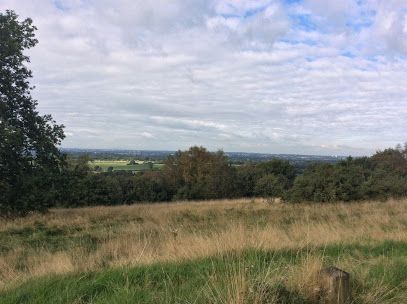If you fancy getting away from it all, Barr Beacon might be just the nature reserve for you. Its only 3 miles from Walsall town centre, and its one of the highest points in the West Midlands. It offers spectacular panoramic views, and from the top you can see surrounding landmarks including the Wrekin, Cannock Chase, Lichfield Cathedral, Birmingham City Centre, and the Lickey Hills. Its the high-point of the Beacon Way and a favourite walking spot for locals.
All in all you can see at least 11 counties from up there: West Midands, Warwickshire, Staffordshire, Shropshire, Leicestershire, Gloucestershire, Northamptonshire, Oxfordshire, Worcestershire, Herefordshire and even Powys Wales!
The two mile circular nature trail will lead you past the historic Scott Plantation, through purple blankets of heather, golden flowering gorse and flower-rich meadows, alive with butterflies, mining bees and other heathland wildlife. The birds love it up there too, and ravens and buzzards are regularly seen by visitors.
From the Stone Age to the Space Age
We know that Barr Beacon was used by Stone Age Man because A Neolithic mace head and Neolithic or Bronze Age stone hammers have been found by archaeologists! Roman coins have been found up there too, as well as evidence of 12th century ridge and furrow farming. These days however, Barr Beacon is more 'space age' than 'stone age', as its a popular spot for Stargazing, used regularly by the Walsall Astronomical Society, and has been designated a 'Dark Sky Discovery Site'.
A beacon of light
Throughout history fires have been lit on hills to send messages, warn of danger and commemorate significant events. Barr Beacon's fires have been lit to warn of the attack of the Spanish Armada, to celebrate Queen Victoria's golden and diamond jubilees, when hilltops all over the country were ablaze.
More recently there was a bonfire for 1951’s Festival of Britain, and the Beacon was lit up with floodlights for Queen Elizabeth II's coronation, and a fire for her silver jubilee. A fire was lit on the Beacon in 1995 for the 50th anniversary of VE Day, and the most recent fire was part of the 'People's Millions' project in 2009.
It is even thought ‘Barr Beacon’ means ‘a hill used for fire signals, because ‘Barr’ is Celtic for ‘hill’ or Old English for ‘‘summit’. ‘Beacon’ is Old English for ‘signal’ or ‘fire beacon’.
Lest We Forget
Of course the focus point of Barr Beacon, and one of Walsall’s most recognisable landmarks is the War Memorial. This symbol of remembrance for the men and women who gave their lives in WWI is now the focus of a fantastic new project to restore the memorial and other heritage features of Barr Beacon, and to provide a focus for engaging the community. If you’re wondering what this will mean in practical terms, it will mean lots more activities and events, remembrance ceremonies, and education materials focusing on landscape, geology, wildlife, history, and all the other things the Beacon has to offer. It’s an exciting time to be involved with the project. Visit the ‘Raising the Barr’ page to find out more.
The memorial dates from 1933, and is made of Portland stone. The roof used to be made of copper, but due to theft and vandalism, the 'Raising the Barr' project has included restoring the dome with zinc. It looks just the same, only less valuable, and therefore hopefully less tempting to thieves!
Inside the memorial is a pedestal which used to house a mounted ‘direction-finder’ or topographic disk. The original 1920 disk was destroyed during the war, and there have been several versions since. The 'Raising the Barr' project will replace this, too.
A Hill for the People
Barr Beacon was opened to the public by Colonel J.H. Wilkinson on Easter Monday in 1919, after centuries of private ownership by generations of the Scott family (who also owned Great Barr hall and Merrions Wood). It is now held in Trust and managed by Walsall Council.
Site information


